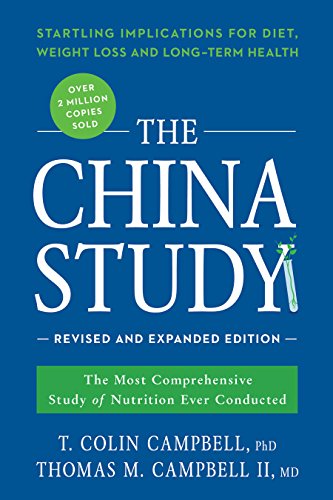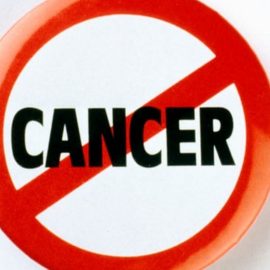

This article is an excerpt from the Shortform summary of "The China Study" by Colin Campbell. Shortform has the world's best summaries of books you should be reading.
Like this article? Sign up for a free trial here .
America spends more money on healthcare, per capita, than any country in the world. You would think this would make Americans healthier than any other population, but it doesn’t. Two-thirds of our population is overweight and half of Americans take a prescription drug every week. Why is this? What are the problems with healthcare in the U.S.?
We’ll cover the 4 biggest healthcare issues in America.
Problem #1: The American Healthcare System is Dangerous
Although an increasing number of doctors are learning the value of nutrition and lifestyle changes, the majority still turn to surgery and pills rather than food and holistic treatments to heal their patients.
While these treatments can be effective, they’re not always safe. In fact, medical care is the 3rd leading cause of death in the U.S., although the U.S. Centers for Disease Control and Prevention refuses to acknowledge it on its list of the top ten causes of death.
Doctor errors, medication errors, and deaths from drugs and surgery kill 225,400 people every year. This is less than the number of people killed by heart disease (710,760) and cancer (553,091), but more than those who die of strokes (167,661) or respiratory diseases (122,009).
These are deaths resulting from people following doctors’ orders and taking medication as directed. And 225,400 deaths is a conservative estimate. It doesn’t include deaths from clearly labeled side effects or deaths from overdoses. The actual number of deaths caused by medical care is probably closer to 400,000 per year.
Clearly, doctors aren’t following the Hippocratic Oath to do no harm. But it’s not necessarily their fault. One of the problems with healthcare in the U.S. is that the system encourages the use of risky surgeries and drugs rather than the safer (and often more effective) treatments of diet and lifestyle changes. This is primarily a problem with the U.S. healthcare system, not doctors.
Problem #2: The American Healthcare System is Expensive
Another problem with healthcare in the U.S. is the price. The costliness of our system impacts us as individuals and as a country.
Firstly, the healthcare system is expensive for our government. We spend more money on health care than any other country in the world. In 1997, that was $3,912 per person per year. The next closest country in spending was Germany, at $2,364 per person. Korea spent only $870 per person.
With all the money spent, you’d think our healthcare system would be the best in the world. It’s not. Ours is regularly rated one of the worst. One year, the World Health Organization ranked the U.S. healthcare system 37th best in the world.
Evidently, the healthcare system doesn’t need to be expensive to be effective. Switzerland spends substantially less on health care than we do, but its citizens live an average of 4.5 years longer than Americans.
Secondly, not only is the healthcare system expensive for the government, it’s expensive for individuals. We spend huge amounts of our own money to be healthy. The financial burden of being healthy is one of the biggest healthcare issues in America.
In the 1980s, thi burden was a moderate 9% of our disposable incomes. But in 2011, that percentage doubled, and it’s projected to be almost 20% in 2022. Health is valuable, and if we actually got healthier after spending that much money, the price might be worth it. However, 20% is a lot of money for treatments that may do more harm than good.
The healthcare system isn’t just bad for our wallets. A third way the cost of our healthcare system impacts us is that it dictates and limits our treatment options. For instance, doctors often choose your treatment based on what your insurance will cover. This treatment isn’t always the safest, most effective, or most efficient one available.
Finally, the healthcare system doesn’t cover everyone. Even though we’re spending all this money, tens of millions of people don’t have insurance or access to basic care.
Our healthcare system is supposed to heal us, but too often, it’s hurting us.
Problem #3: The American Healthcare System is Funded by Drug Companies
Traditionally, drug companies paid many of the expenses of medical schools, including education and research expenses. This contributes to the first and second problems with healthcare in the U.S system.
Although there’s evidence that direct marketing from drug companies in medical schools is decreasing, there are still many doctors who learned from pharmaceutical reps at their schools that there’s a pill for every problem.
Drug companies may influence medical students and schools by:
- Giving students free gifts like paid entertainment and travel expenses.
- Sponsoring “lectures” that are actually advertisements for the company’s products.
- Designing the research conducted in medical schools and retaining the power to bury results they don’t like.
- Using PR firms to write scientific articles, then attaching the names of willing students and doctors.
- Providing the majority of the revenue of medical journals, which depend financially on drug advertisements.
Again, the bias of doctors toward drug solutions is dangerous. 20% of new drugs will either be pulled from the market within 25 years or get a “black box warning,” meaning one of its side effects could result in death or serious injury. 100,000 patients in the U.S. die every year from taking their prescribed medications correctly.
Problem #4: The American Healthcare System Doesn’t Value Dietary Prevention and Treatment
A fourth problem with healthcare in the U.S. is that many doctors feel threatened by the idea that foods can cure as well as (or better than) they can and Medical students get almost no training in nutrition.
Doctors have spent years developing their skills and learning how to execute extremely complicated procedures. It’s demoralizing to think that a patient could choose between eating more greens and having bypass surgery, and eating more greens might be the more effective choice.
In 2010, medical students got an average of 20 hours of nutrition education. This is miniscule compared to their total hours of medical school coursework. Many of these “nutrition” hours focus on biochemistry and the metabolism rather than using food to prevent and treat illnesses. One survey found that some students finish these courses and don’t even realize nutrition was covered in them.
Aggravating the problem, much of the educational material related to food and disease is supplied by the food industry, including the Dannon Institute, the National Cattlemen’s Beef Association, the National Dairy Council, and Nestlé. In 2003, 112 medical schools used nutrition curricula sponsored by food and drug companies.
Consequently, many doctors prescribe meal-replacement shakes for diabetics, milk for patients with osteoporosis, and high-fat, high-meat diets for people who want to lose weight. They don’t have the training to know better. There’s also little knowledge among doctors that diseases are reversible.
The problems with American healthcare are serious, but public knowledge of these issues can help turn the tide toward safer practices and a healthier country. To limit how much healthcare issues in America impact you, eat a healthy diet and exercise to reduce the chances that you’ll have a major medical issue.
———End of Preview———

Like what you just read? Read the rest of the world's best summary of "The China Study" at Shortform . Learn the book's critical concepts in 20 minutes or less .
Here's what you'll find in our full The China Study summary :
- Why animal proteins (meat, milk) might cause cancer, diabetes, and other diseases
- Why the medical institution is structured to hide the truth about disease and food
- The precise diet you'll need to eat to live longer and feel happier






